Family: Tenthredinidae
Family common name: common sawflies
Subfamily: Blennocampinae
Tribe: Phymatocerini
Genus: Stethomostus Benson, 1939
Subgenera: none
The Tenthredinidae are the most species-rich family and are found throughout the world, in all continents but Antarctica. They are known as the “common sawflies.” They can generally be recognized by a cylindrical body and long, segmented antennaeantenna:
the sensory organ emerging from the front of the head, usually between the compound eyes and above the clypeus; includes the flagellum, scape and pedicel
 . Otherwise, they come in a variety of colors, sizes, and forms (Goulet 1992Goulet 1992:
. Otherwise, they come in a variety of colors, sizes, and forms (Goulet 1992Goulet 1992:
Goulet H. 1992. The genera and subgenera of the sawflies of Canada and Alaska: Hymenoptera. Symphyta. The insects and arachnids of Canada. Part 20. Agriculture Canada Publication.).
Sawflies in the subfamily Blennocampinae have a diverse set of life histories and habits. Many species are restricted to subtropical and tropical regions, but the genus is still fairly species-rich in North America. Blennocampinae includes many sawflies that feed on ornamental and forestry crops. This subfamily can be recognized by wing venationvenation:
the network of veins on a wing
and bidentatebidentate:
having two teeth; often used in descrbing mandibles or tarsal claws
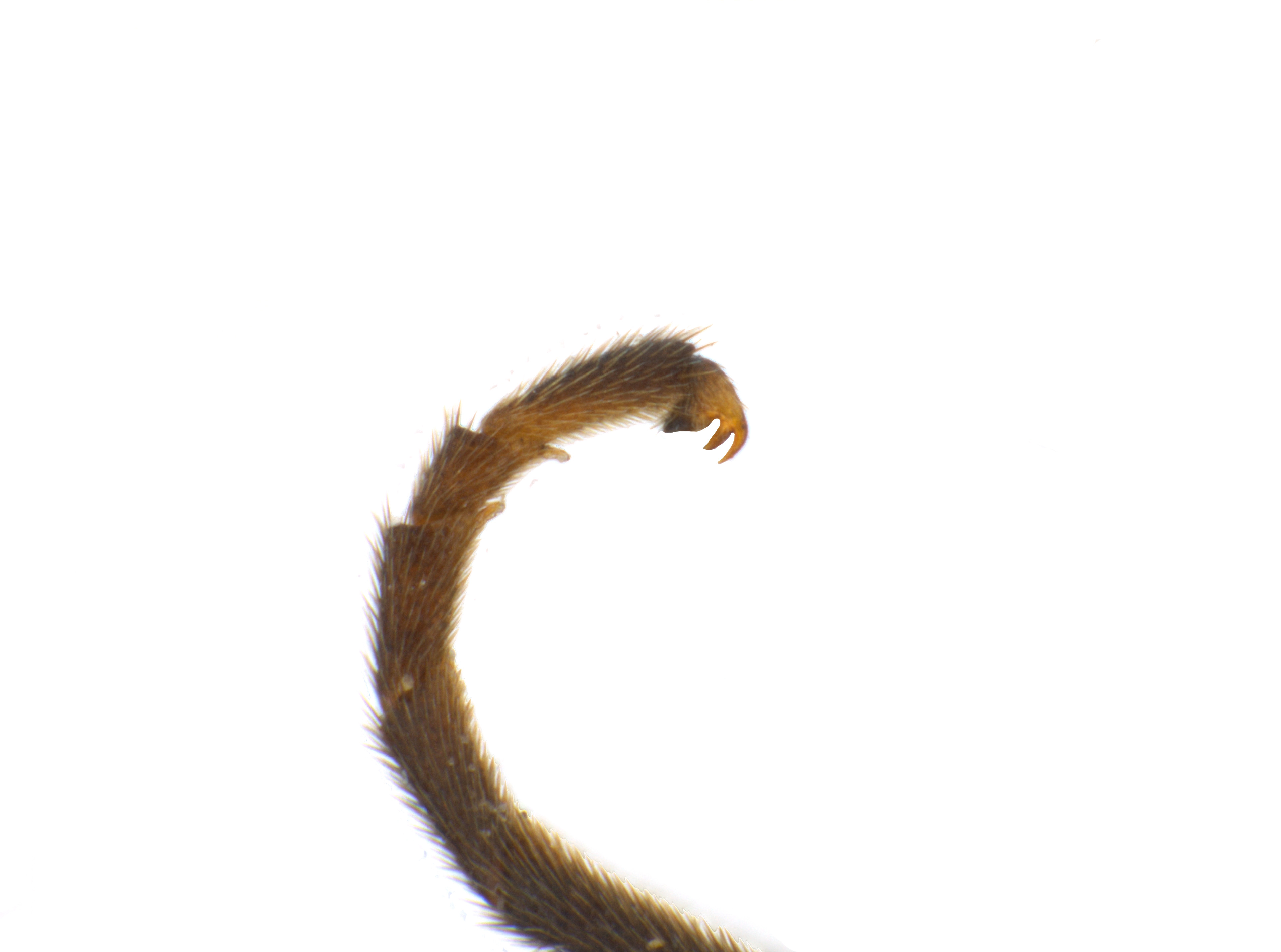 mandibles (Smith 1969dSmith 1969d:
mandibles (Smith 1969dSmith 1969d:
Smith DR. 1969d. Nearctic Sawflies. I. Blennocampinae: Adults and larvae (Hymenoptera: Tenthredinidae). Technical Bulletin, U.S. Department of Agriculture 1397: 1-176.).
Stethomostus is monotypicmonotypic:
describes having only one representative; ex. a genus that includes only one species
in North America. Stethomostus fuliginosus is about 6–6.5 mm in length and entirely black with white markings on fore tibiafore tibia:
the tibia of the fore leg
 and partially darkened wings (Smith 1969dSmith 1969d:
and partially darkened wings (Smith 1969dSmith 1969d:
Smith DR. 1969d. Nearctic Sawflies. I. Blennocampinae: Adults and larvae (Hymenoptera: Tenthredinidae). Technical Bulletin, U.S. Department of Agriculture 1397: 1-176.).
There are seven described extantextant:
in existence; opposite of extinct
species worldwide. One species occurs in North America (Taeger et al. 2018Taeger et al. 2018:
Taeger A, Liston AD, Prous M, Groll EK, Gehroldt T, and Blank SM. 2018. ECatSymmdash;Electronic World Catalog of Symphyta (Insecta, Hymenoptera). Program version 5.0 (19 Dec 2018), data version 40 (23 Sep 2018). Senckenberg Deutsches Entomologisches Institut (SDEI), Muuml;ncheberg. https://sdei.de/ecatsym/ Accessed: 28 Jan 2020.).
Subfamily characters
 veins Cu1 and 1m-cu between 120°–150° (Goulet 1992Goulet 1992:
veins Cu1 and 1m-cu between 120°–150° (Goulet 1992Goulet 1992: veins M and 1m-cu parallel (Smith 1969dSmith 1969d:
veins M and 1m-cu parallel (Smith 1969dSmith 1969d: veins 2A and 3A incomplete (Smith 1969dSmith 1969d:
veins 2A and 3A incomplete (Smith 1969dSmith 1969d:Genus characters
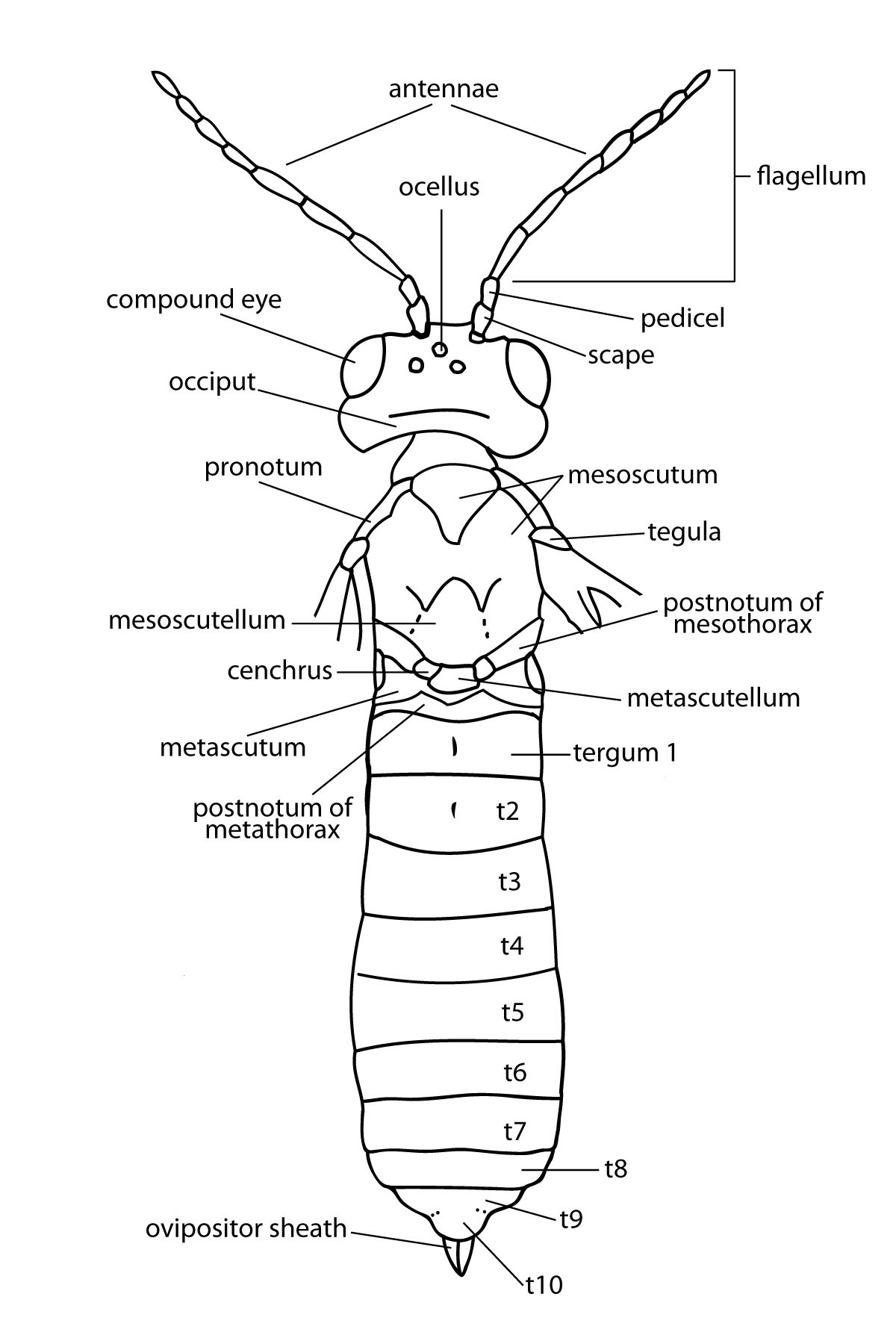 ridge present near mandiblemandible:
ridge present near mandiblemandible: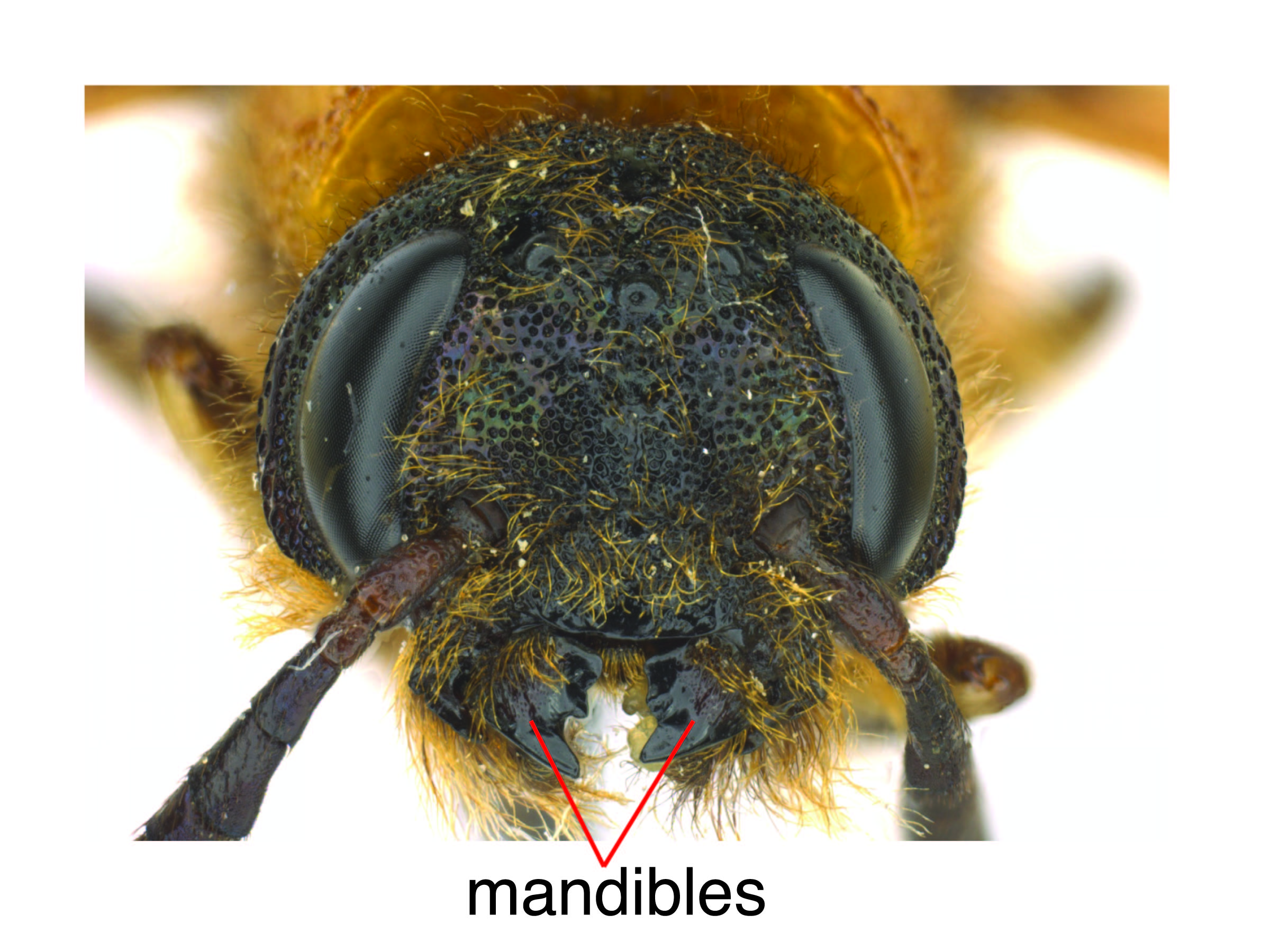 ; ridge lacking pits (Goulet 1992Goulet 1992:
; ridge lacking pits (Goulet 1992Goulet 1992: longer than wide (Smith 1969dSmith 1969d:
longer than wide (Smith 1969dSmith 1969d: veins 2A and 3A straight (Goulet 1992Goulet 1992:
veins 2A and 3A straight (Goulet 1992Goulet 1992: cellcell:
cellcell: M absent (Smith 1969dSmith 1969d:
M absent (Smith 1969dSmith 1969d: with furcatefurcate:
with furcatefurcate: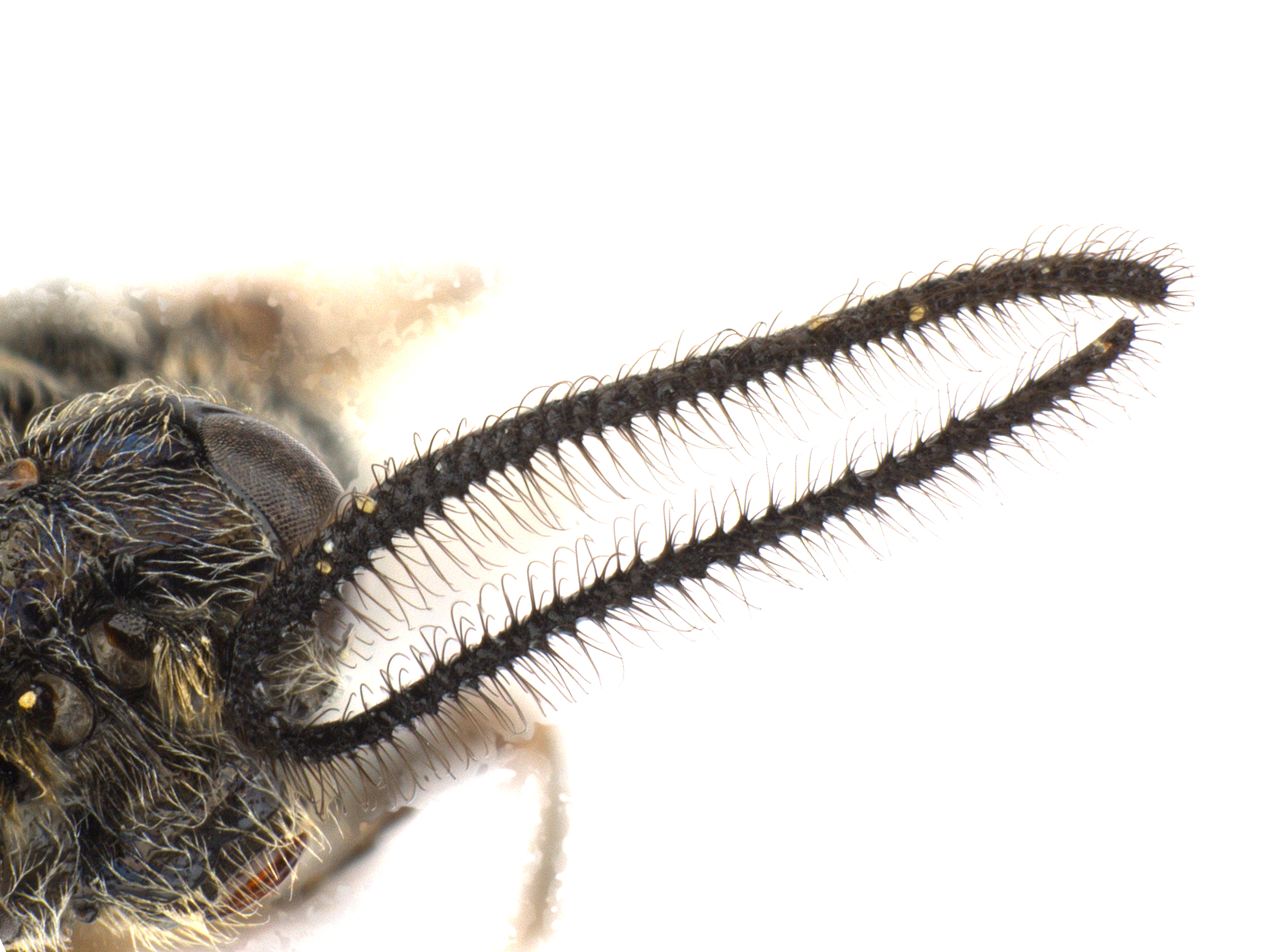 spur (Smith 1969dSmith 1969d:
spur (Smith 1969dSmith 1969d: basalbasal:
basalbasal: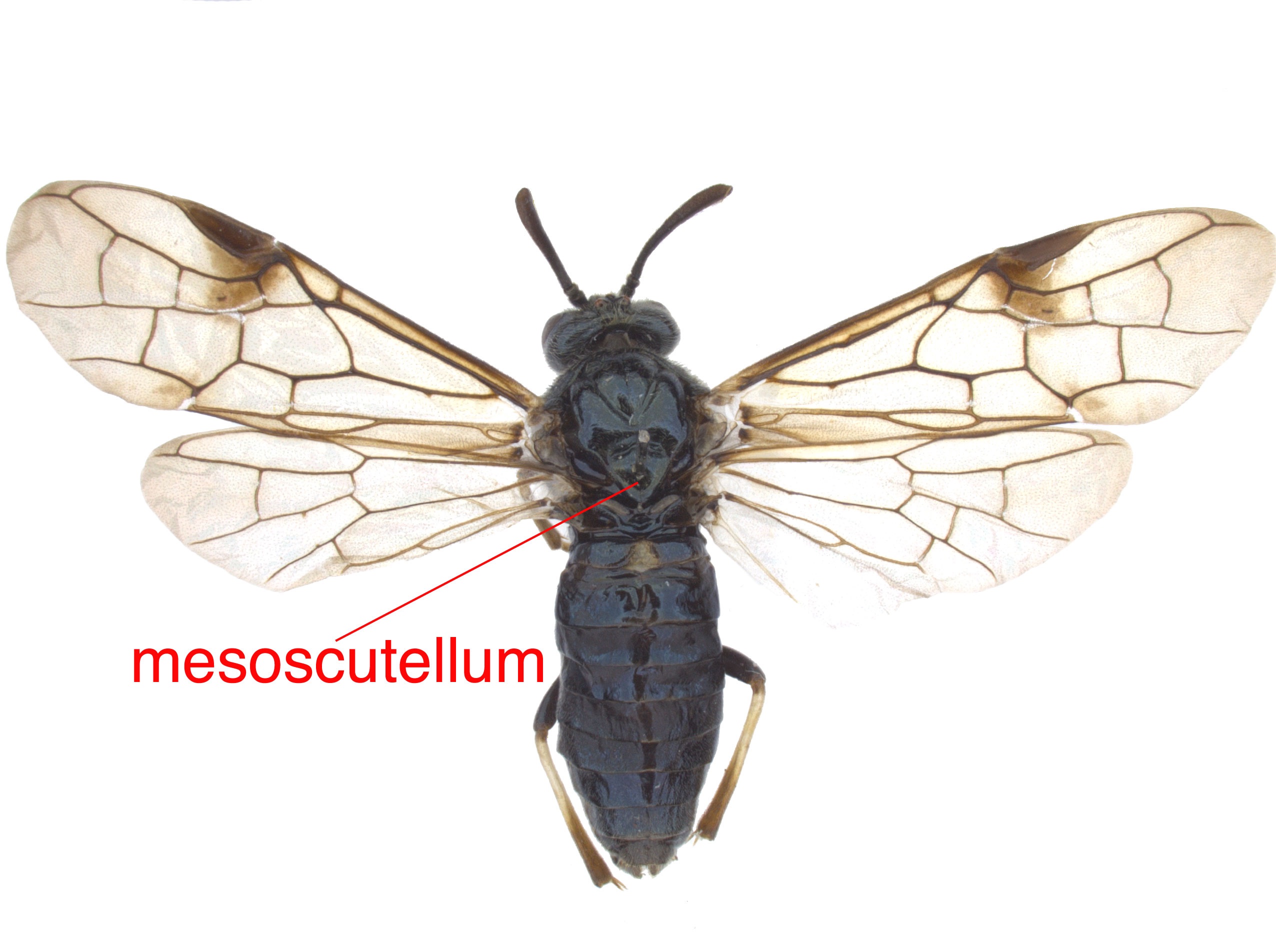 (Goulet 1992Goulet 1992:
(Goulet 1992Goulet 1992:Stethomostus can be confused with similar species in the subfamily Blennocampinae. It can be distinguished from most other genera by the length of the third antennal segment, and from similar species in Eutomostethus by the furcatefurcate:
divided into branches; forked
 foretibial spurspur:
foretibial spurspur:
spine, usually on a leg segment
and the straight apexapex:
the end or most distal area of any structure
to veins 2A and 3A of fore wingfore wing:
the anterior wing of each pair of wings; usually the largest wing of the pair
 (Smith 1969dSmith 1969d:
(Smith 1969dSmith 1969d:
Smith DR. 1969d. Nearctic Sawflies. I. Blennocampinae: Adults and larvae (Hymenoptera: Tenthredinidae). Technical Bulletin, U.S. Department of Agriculture 1397: 1-176., Goulet 1992Goulet 1992:
Goulet H. 1992. The genera and subgenera of the sawflies of Canada and Alaska: Hymenoptera. Symphyta. The insects and arachnids of Canada. Part 20. Agriculture Canada Publication.).
none
Stethomostus fuliginosus feeds on species of Ranunculus (buttercup) (Goulet 1992Goulet 1992:
Goulet H. 1992. The genera and subgenera of the sawflies of Canada and Alaska: Hymenoptera. Symphyta. The insects and arachnids of Canada. Part 20. Agriculture Canada Publication.).
unknown
World: This genus is known from North America, throughout Europe and Russia, and in China, Japan, and Vietnam (Taeger et al. 2018Taeger et al. 2018:
Taeger A, Liston AD, Prous M, Groll EK, Gehroldt T, and Blank SM. 2018. ECatSymmdash;Electronic World Catalog of Symphyta (Insecta, Hymenoptera). Program version 5.0 (19 Dec 2018), data version 40 (23 Sep 2018). Senckenberg Deutsches Entomologisches Institut (SDEI), Muuml;ncheberg. https://sdei.de/ecatsym/ Accessed: 28 Jan 2020.).
North America: Stethomostus fuliginosus was introduced to North America and now occurs in northeastern United States, in New England west to the Great Lakes region, and into New Brunswick in Canada (Smith 1969dSmith 1969d:
Smith DR. 1969d. Nearctic Sawflies. I. Blennocampinae: Adults and larvae (Hymenoptera: Tenthredinidae). Technical Bulletin, U.S. Department of Agriculture 1397: 1-176.).
Map data from: GBIF.org (29 October 2019) GBIF Occurrence Download Stethomostus
Details about data used for maps can be found here.